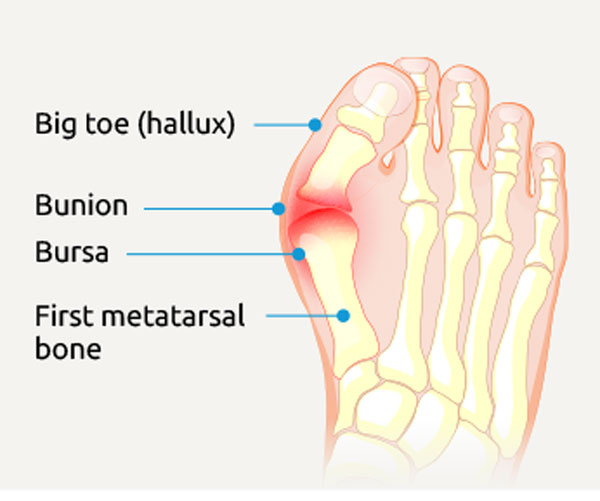
A bunion is most likely to develop when susceptible feet are repeatedly squeezed into narrow, pointed-toe footwear. The big toe pushes against the other toes, sometimes diving over or under them. As a result, the base of the big toe — the metatarsophalangeal (MTP) joint — juts orangles out from the foot. To judge howsevere a bunion is, clinicians take an x-ray and measure angles between certain bones in thefoot, in particular, the hallux valgus angle (HVA) — the angle between the first metatarsal and the big toe — and the angle formed by the first and second metatarsals, called the inter metatarsal angle (IMA). The upper limit of normal for the HVA is 15 degrees; for the IMA, 9 degrees.
Why bunions need attention
The MTP joint helps us bear and distribute weight during a range of activities. A bunion at this critical junction of bones, tendons, and ligaments can seriously impair the foot’s functioning. For one thing, a bunion on the big toe can damage the other toes. Under the pressure of the big toe, they may develop corns or become bent, forming hammertoes. The nails may become ingrown, and calluses may form on the bottom of the foot. If you constantly shift your weight off the painful big toe joint to other metatarsals, you may develop discomfort in the ball of the foot. As the misshapen joint becomes more uncomfortable and harder to fit into shoes, you may have to curtail exercise and other activities. Even walking may become difficult.
Especially in older women, foot disorders are a major cause of disability and sedentary habits. Older women are more likely to have bunions as they get older, and the more severe their bunions are, the lower their quality of life is. You should seek treatment if the pain and deformity interfere with daily routines and physical activity.
